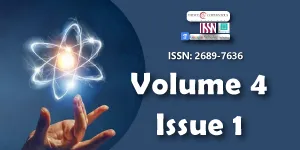Dirac spinor’s transformation under Lorentz mappings
Main Article Content
Abstract
For a given Lorentz matrix, we deduce the Dirac spinor’s transformation in terms of four complex quantities.
Downloads
Article Details
Copyright (c) 2021 Montiel-Pérez JY, et al.

This work is licensed under a Creative Commons Attribution 4.0 International License.
Licensing and protecting the author rights is the central aim and core of the publishing business. Peertechz dedicates itself in making it easier for people to share and build upon the work of others while maintaining consistency with the rules of copyright. Peertechz licensing terms are formulated to facilitate reuse of the manuscripts published in journals to take maximum advantage of Open Access publication and for the purpose of disseminating knowledge.
We support 'libre' open access, which defines Open Access in true terms as free of charge online access along with usage rights. The usage rights are granted through the use of specific Creative Commons license.
Peertechz accomplice with- [CC BY 4.0]
Explanation
'CC' stands for Creative Commons license. 'BY' symbolizes that users have provided attribution to the creator that the published manuscripts can be used or shared. This license allows for redistribution, commercial and non-commercial, as long as it is passed along unchanged and in whole, with credit to the author.
Please take in notification that Creative Commons user licenses are non-revocable. We recommend authors to check if their funding body requires a specific license.
With this license, the authors are allowed that after publishing with Peertechz, they can share their research by posting a free draft copy of their article to any repository or website.
'CC BY' license observance:
|
License Name |
Permission to read and download |
Permission to display in a repository |
Permission to translate |
Commercial uses of manuscript |
|
CC BY 4.0 |
Yes |
Yes |
Yes |
Yes |
The authors please note that Creative Commons license is focused on making creative works available for discovery and reuse. Creative Commons licenses provide an alternative to standard copyrights, allowing authors to specify ways that their works can be used without having to grant permission for each individual request. Others who want to reserve all of their rights under copyright law should not use CC licenses.
Dirac PAM (1928) The quantum theory of the electron. Proc. Roy. Soc. London A117: 610-624 andA118: 351-361. Link: https://bit.ly/2ThErAQ
Leite-Lopes J (1977) Introduction to quantum electrodynamics. (Trillas, Mexico).
Ohlsson T (2011) Relativistic quantum physics. (Cambridge University Press, England).
Bagrov VG, Gitman D (2014) The Dirac equation and its solutions. (Walter de Gruyter GmbH, Berlin).
Maiani L, Benhar O (2016) Relativistic quantum mechanics. (CRC Press, Boca Raton, Fl, USA).
Good RH (1955) Properties of the Dirac matrices. Rev. Mod. Phys. 27: 187-211. Link: https://bit.ly/3khDfsc
López-Bonilla J, Rosales L, Zúñiga-Segundo A (2009) Dirac matrices via quaternions. J. Sci. Res. (India) 53: 253-255. Link: https://bit.ly/3idWv77
López-Bonilla J, Ovando G (2021) Arbitrary 4x4 matrix in terms of Dirac matrices. Studies in Nonlinear Sci. 6: 17-18. Link: https://bit.ly/3B2N1Et
Cohen-Tannoudji C, Dupont-Roc J, Grynberg G (1989) Photons and atoms: Introduction to quantum Electrodynamics. (John Wiley and Sons, New York) Chap. 5.
Cayley A (1858) A memoir on the theory of matrices. London Phil. Trans. 148: 17-37. Link: https://bit.ly/3rbam26
Sylvester J (1884) On quaternions, nonions and sedenions. John Hopkins Circ. 3: 7-9. Link: https://bit.ly/36BWuVl
Pauli W (1927) Zur quantenmechanik des magnetischen electrons. Zeits. für Physik 43: 601-623. Link: https://bit.ly/3hFPJbh
Synge JL (1965) Relativity: the special theory. (North-Holland, Amsterdam).
López-Bonilla J, Morales J, Ovando G (2002) On the homogeneous Lorentz transformation, Bull. Allahabad Math. Soc. 17: 53-58. Link: https://bit.ly/3B2NeHL
Ahsan Z, López-Bonilla J, Man-Tuladhar B (2014) Lorentz transformations via Pauli matrices. J. of Advances in Natural Sciences 2: 49-51. Link: https://bit.ly/3ehmc5G
Carvajal B, Guerrero I, López-Bonilla J (2015) Quaternions, 2x2 complex matrices and Lorentz transformations. Bibechana 12: 30-34. Link: https://bit.ly/3B4YseJ
López-Bonilla J, Morales-García M (2020) Factorization of the Lorentz matrix. Comput. Appl. Math. Sci. 5: 32-33. Link: https://bit.ly/3B4aZiE
López-Bonilla J, Morales-Cruz D (2020) Rodrigues-Cartan’s expression for Lorentz transformations. Studies in Nonlinear Sci. 5: 41-42. Link: https://bit.ly/3rclgVr
López-Bonilla J, Morales-Cruz D, Vidal-Beltrán S (2021) On the Lorentz matrix. Studies in Nonlinear Sci. 6: 1-3. Link: https://bit.ly/3B2N1Et
Pauli W (1936) Contributions mathématiques la théorie de Dirac. Ann. Inst. H. Poincaré 6: 109-136. Link: https://bit.ly/2UIwDbA
Rose ME (1961) Relativistic electron theory. (John Wiley and Sons, New York).
Rumer J (1936) Spinorial analysis. (Moscow).
Aharoni J (1959) The special theory of relativity. (Clarendon Press, Oxford).
Penrose R, Rindler W (1984) Spinors and space-time. I. (Cambridge University Press).
Acevedo M, López-Bonilla J, Sánchez M (2005) Quaternions, Maxwell equations and Lorentz transformations. Apeiron 12: 371-384. Link: https://bit.ly/3ehmPMA
Cruz-Santiago R, López-Bonilla J, Mondragón-Medina N (2021) Unimodular matrix for a given Lorentz transformation. Studies in Nonlinear Sci. 6: 4-6. Link: https://bit.ly/3B2N1Et
Gürsey F (1955) Contribution to the quaternion formalism in special relativity. Rev. Fac. Sci. Istanbul A20:149-171. Link: https://bit.ly/3wQSVW9
Gürsey F (1957) Relativistic kinematics of a classical point particle in spinor form. Nuovo Cim. 5: 784-809. Link: https://bit.ly/2TdnW8T
Müller-Kirsten H, Wiedemann A (2010) Introduction to supersymmetry. (World Scientific, Singapore).
Macfarlane AJ (1966) Dirac matrices and the Dirac matrix description of Lorentz transformations. Commun. Math. Phys. 2: 133-146. Link: https://bit.ly/3rcsngP
Caicedo-Ortiz HE, López-Bonilla J, Vidal-Beltrán S (2021) Lorentz mapping and Dirac spinor. Comput. Appl. Math. Sci. 6: 9-13. Link: https://bit.ly/2UPIGDP

